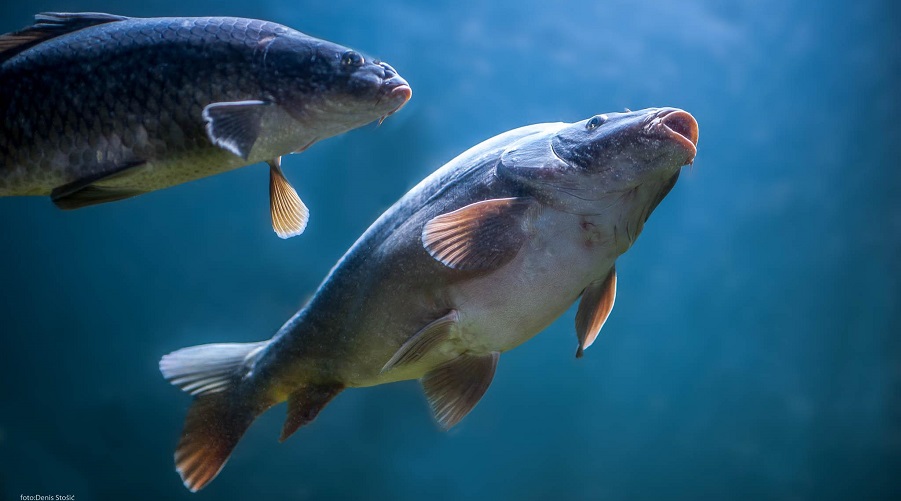
Common carp. Photo by Aquatika Karlovac, FishBase
A widely debated topic in biology and fisheries sciences is the role of oxygen in the growth of fishes and other water-breathing animals. According to new research, developmental changes in individual fish and experimental errors are the causes of inconsistencies that have erroneously been linked to the Gill Oxygen Limitation Theory (GOLT), developed to explain the influence of oxygen uptake on fish growth.
In a paper published in the journal Fishes, researchers from the Sea Around Us initiative at the University of British Columbia and Leiden University use data from 33 fish species to support the argument that small differences between fish’s oxygen consumption increase and gill surface area growth do not invalidate the principles of the GOLT.
“The Gill Oxygen Limitation Theory states that as fish get bigger, their gills can’t keep up with their growing oxygen demands, which is what limits how much they can grow. This is because gills are two-dimensional surfaces that grow in length and width, while fish’s bodies are three-dimensional and grow in length, width and depth. Thus, as fish get bigger, they have less gill surface area and their gills provide less oxygen per unit volume or weight,” said Dr. Daniel Pauly, lead author of the study and principal investigator of the Sea Around Us. “Fish’s oxygen consumption is, consequently, closely tied to their gill surface area. Based on the physics of how oxygen diffuses, the rate at which fish consume and use oxygen is roughly proportional to the rate at which their gills grow.”
Dr. Pauly and his co-author, Dr. Johannes Müller, used a series of calculations to estimate, for the 33 fish species examined, how the amount of oxygen a fish uses and the total surface area of the gills scale with body size.
Previous studies have argued that if fish’s rates of oxygen consumption and gill growth are not exactly proportional, the GOLT would be disproven. However, based on the data and estimations in this new paper, the small differences detected in earlier studies have been caused by changes in how gills grow and function as individual fish develop, differences in how easily oxygen passes from water into the fish’s blood – a process that differs within species based on the environment fish are in – and random errors and inconsistencies in the way the data were collected.
“Even though some datasets showed differences between the rates of oxygen consumption and gill growth in individual fish, there was no significant mismatch between the two,” Dr. Müller, who is an assistant professor at Leiden University, said. “Variations between species and life stages can be explained by factors such as developmental changes in gill structure and measurement inconsistencies.”
According to the researchers, even when outliers were considered, the overall results confirmed that gill surface area remains a primary factor in determining oxygen availability and, consequently, fish growth.
“As climate change warms and deoxygenates the global ocean, a proper understanding of these processes is crucial. Fish growth has important implications in the way ecosystems function and, therefore, the way fisheries are managed,” Dr. Pauly said.
The paper “Fick’s diffusion laws and the scaling of gill surface area and oxygen uptake in fish” was published in Fishes, https://doi.org/10.3390/fishes10050233

